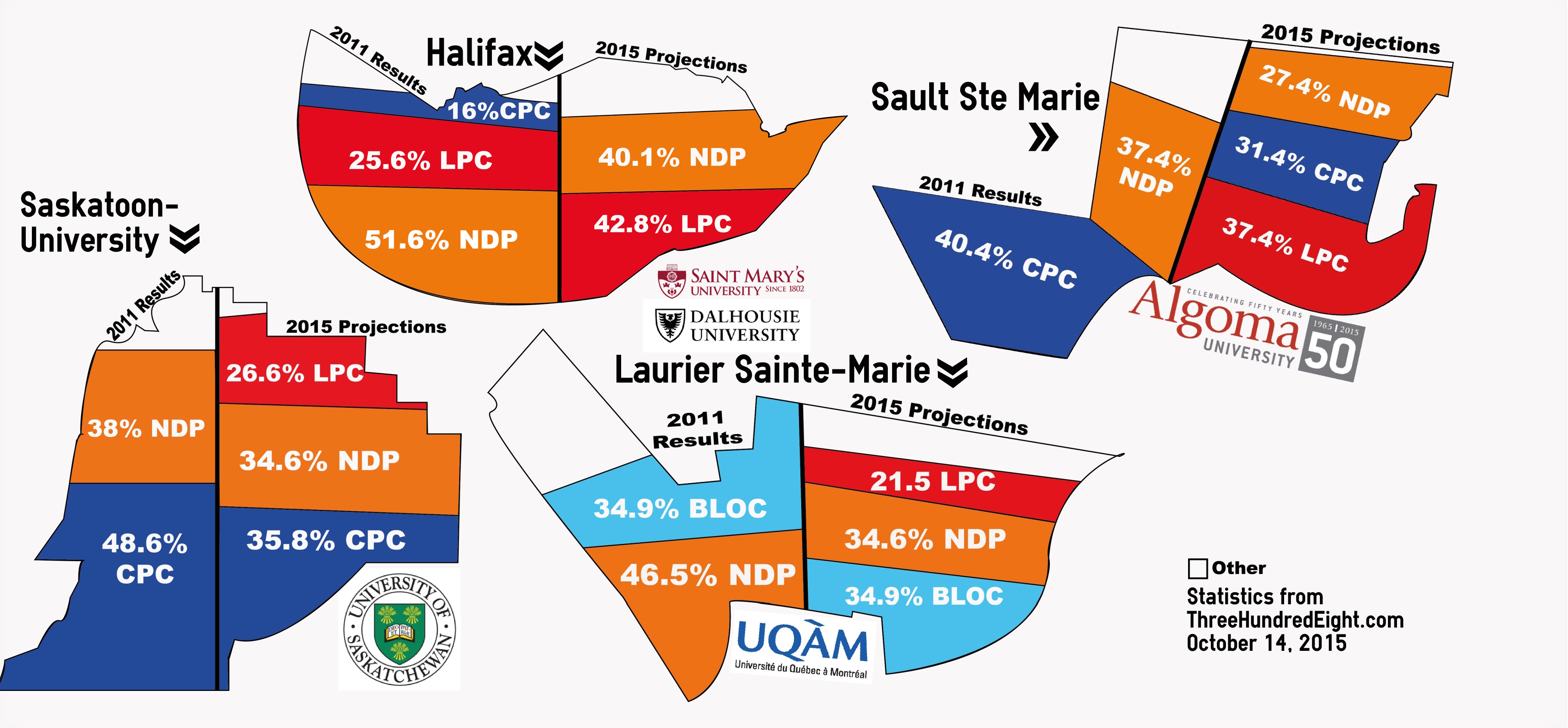Post-secondary schools, and with them thousands of eligible voters, are in ridings which are currently being contested in this federal election, according to political experts.
There are changes this federal election that may influence which parties take which seats. This election has 338 ridings, up from 308 in 2011. Some universities have also been shifted to different ridings.
Three political experts at Carleton University, the University of Toronto (U of T), and the University of Calgary (U of C) weighed in on whether students have the power to sway the vote in their federal school ridings:
Ottawa Centre
Carleton is located in the Ottawa Centre riding, which is currently represented by the New Democratic Party (NDP). NDP candidate Paul Dewar has a 5-8 per cent lead over Liberal Party candidate Catherine McKenna, according to several poll figures.
Carleton journalism professor Christopher Waddell said he thinks it’s possible for students to have an impact on election results in the riding.
“If [students] all decide to vote, collectively they can make a difference,” Waddell said. “Of course they don’t all vote for the same party. But still, that would raise the voter turnout in the constituency and could produce a different result.”
He noted the 2011 federal election was held in May, and there were less students in the area at that time.
“The fact that students are around this time could actually make a difference in terms of the overall numbers,” he said. “If the students all line up behind one [candidate] or the other, that could make a difference in who actually turns out to be winning.”
Waddell said student engagement could change with polling stations on campus.
“There’s more opportunity to vote, you don’t have to go anywhere, and that means it’s easier to do,” he said.
University—Rosedale
U of T is located in the University—Rosedale riding, which was created from parts of Trinity—Spadina and Toronto Centre. The riding contains part of Toronto’s Chinatown, student and artist neighbourhoods such as the Annex, and one of Canada’s wealthiest neighbourhoods, Rosedale.
Nelson Wiseman, a political science professor at U of T, said he thinks it’s “impossible” to tell if students can make a difference in the riding, since Elections Canada doesn’t reveal which voters are students.
However, Wiseman said the race in University—Rosedale is mostly between the Liberals and NDP in this election, but has “very little doubt” the Liberals won’t win the riding.
He said in the last couple of years, the NDP and Liberals have done better in courting more support among young people than the Conservatives.
“I’ve noticed in the last three weeks a slow but steady shift of the NDP’s national vote going down, and Liberal vote going up somewhat,” he said. “So that cascades into virtually all the constituencies. A lot of people are voting strategically [to defeat the Conservatives], so that’ll happen here.”
The Liberals are leading over the NDP by 15 per cent in the riding as of Oct. 14, according to poll tracker website ThreeHundredEight.com, which does poll projections for CBC.
U of T was formerly part of Trinity—Spadina, which was represented by Liberal Adam Vaughan since 2014, who won the riding in a byelection. The riding was represented by former NDP MP Olivia Chow from 2006 until last year, when she resigned to run for mayor of Toronto.
Chow and Vaughan are running again, but in the redistricted Spadina—Fort York riding. Chow was able to win previous elections with the help of votes from students and professors, the Toronto Star reported.
Calgary Confederation
U of C is part of the Calgary Confederation riding, created from three other ridings.
The Conservatives won in all three of the ridings in the 2011 election, but Calgary Confederation may be headed in a different direction.
The Liberals lead the Conservatives by roughly eight per cent in the riding, according to ThreeHundredEight.com.
Byron Miller, an urban politics professor at U of C, said student voters in the area could determine which of the two parties emerge in power.
If more youth and students vote, Miller said it could benefit left-leaning parties.
Miller said he expects a “last-minute shift” of support to whoever the front-running non-Conservative candidate is in the riding.
“In the [Alberta] provincial election in the spring . . . people realized that the NDP was the most viable alternative, and people just rallied around the NDP to a degree that had never occurred before. And I would not be at all surprised to see the same thing happen in the federal election,” he said.
“I suspect that as we get very close to election day, some of the NDP support will go over to [the Liberals],” he said.
Miller said student votes will still be crucial for this election.
“The higher the student turnout,” he said, “the greater the chance that we’ll see some real change.”






